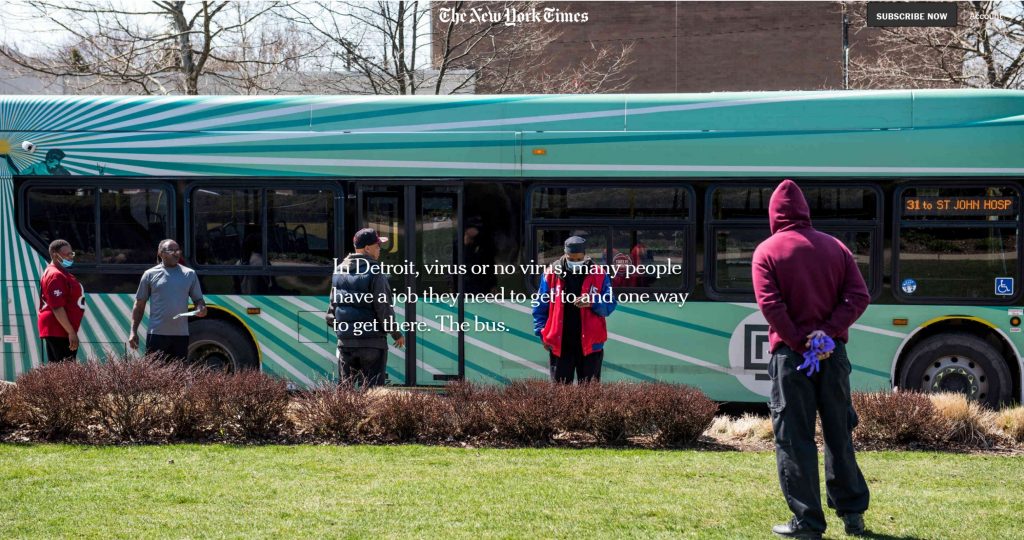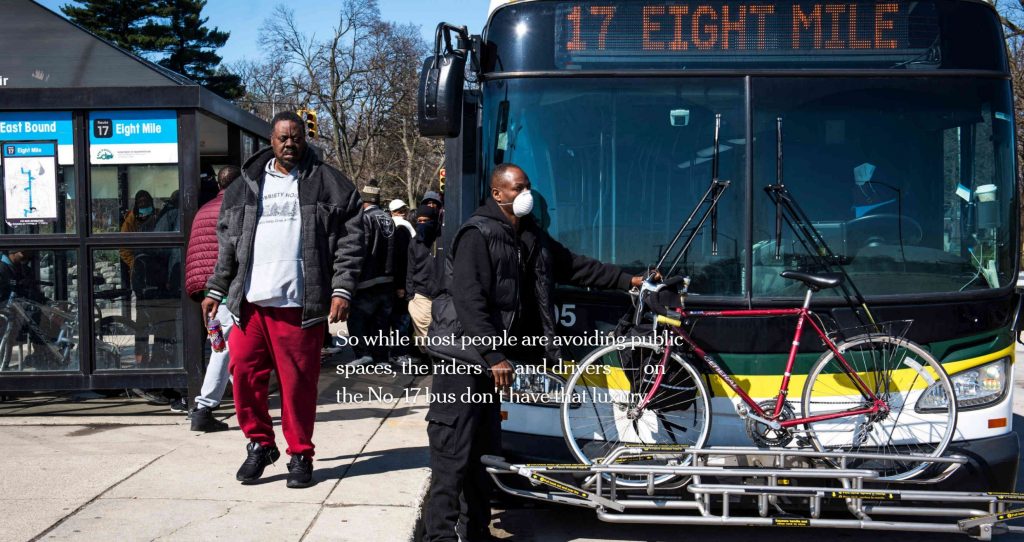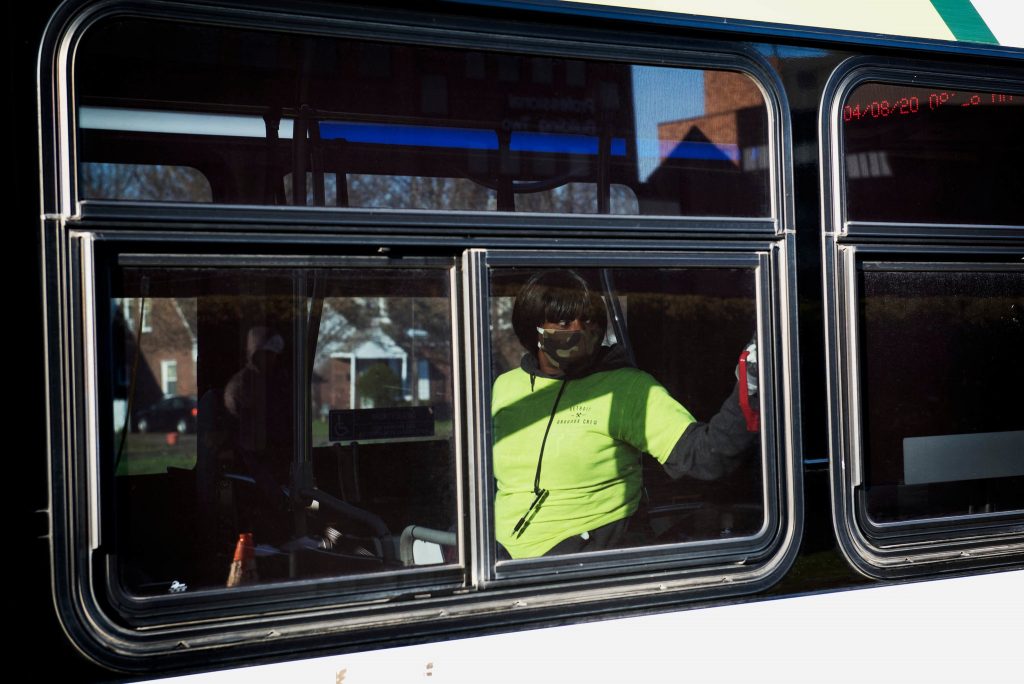To spotlight and humanize the impact of Coronavirus and people who can’t shelter in place, The New York Times published an image-laden feature of riding the bus in Detroit, calling the bus “a rolling symbol of the disparity in how this virus is affecting Americans.”

The No. 17 bus began chugging westward across Detroit.
On stepped the fast-food worker who makes chicken shawarma that’s delivered to doorsteps, the janitor who cleans grocery stores, the warehouse worker pulling together Amazon orders.
By 9:15, every available row on the bus was occupied. Strangers sat shoulder-to-shoulder. The city might be spread across 139 square miles, but one morning last week there was no way to socially distance aboard this 40-foot-long New Flyer bus. Passengers were anxious and annoyed. Resigned, too.
New York Times, April 15, 2020


This hardscrabble city, where nearly 80 percent of residents are black, has become a national hot spot with more than 7,000 infections and more than 400 deaths. One reason for the rapid spread, experts say, is that the city has a large working-class population that does not have the luxury of living in isolation. Their jobs cannot be performed from a laptop in a living room. They do not have vehicles to safely get them to the grocery store.
New York Times, April 15, 2020


The City has worked hard both before and after this article was published to minimize risk to drivers and riders:
- The City now requires every rider to wear a mask and has given away more than 50,000 masks to bus riders.
- The new Detroit Director of Transit has committed to restore the full schedule of bus service by late June and to install barriers for drivers by late July.
But the janitors, Amazon workers, grocery clerks, and others depending on DDOT buses cannot wait.